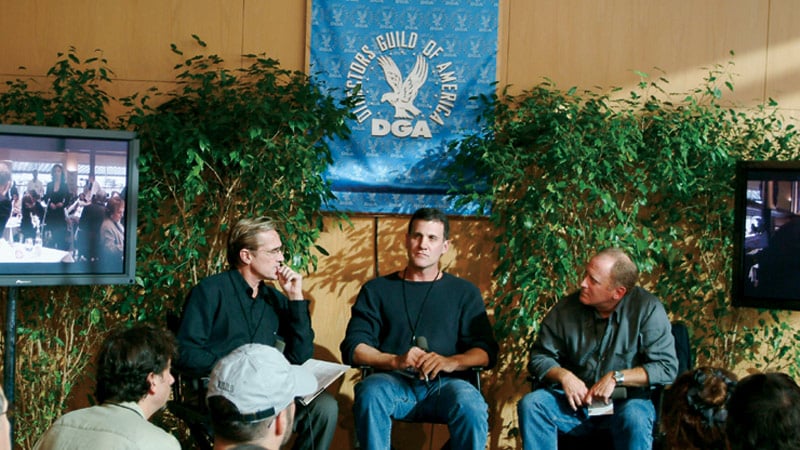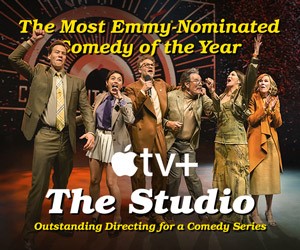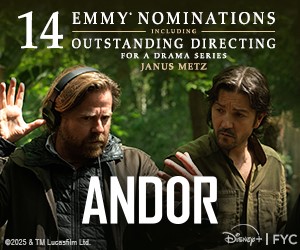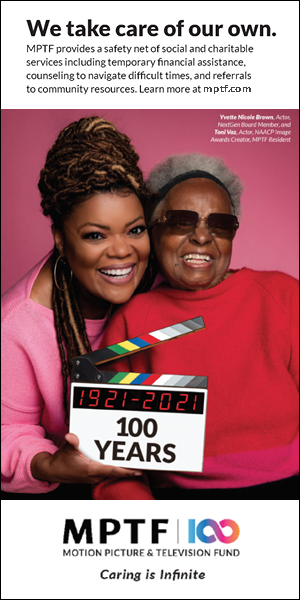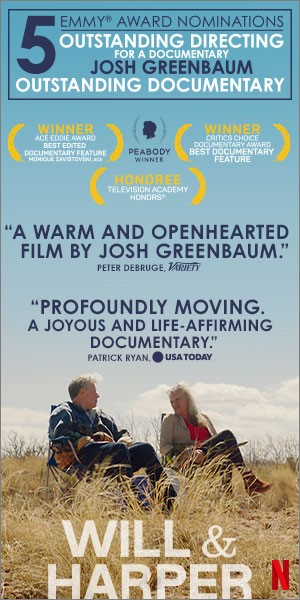"Popular wisdom says that filmmaking, the art of film, is the result of many creative voices. But isn't that a contradiction in terms?" asked Victoria Hochberg, director and DGA National Board Member, in her opening remarks at the November 1, day-long DGA Special Projects event, "Collaboration: Making the Pieces Fit" after being introduced to a packed house by director William Crain.
"Isn't a work of art the singular vision of a possessed mind? Did Van Gogh collaborate on Wheatfield With Crows? Who worked with Beethoven on the Eroica? Ansel Adams was pretty much alone when he snapped that moonrise over Hernandez, New Mexico. And there's Nathaniel Hawthorne, scratching his solitary way in a tiny New England room through The Scarlet Letter.
"On the other hand," she added, "can you imagine Casablanca without Bogart? Without the lighting on Ingrid Bergman's face as one tear slowly escapes from her eye? Without the opening special effects that map the refugee route across a revolving globe? Without 'Here's looking at you, kid,' or 'I am shocked, shocked!, to find out there's gambling going on in here!'
"So it appears that directors, by virtue of the art form itself, must be collaborators. David Lean was pretty clear about this when he discussed his work on Doctor Zhivago. He said he worked one year with the writer. He directed not only the actors but the cameraman, set designer, costume designer, sound men, editor, composer and even the laboratory in their final print. Successful directors must collaborate. Even if you don't want to. Even if you think that it's your film completely, and you don't need a gaggle of voices throwing ideas at you. You must work with others to get that film on the screen.
"Is being a good collaborator, then, merely a question of personality? A trait that some have by birth, but others don't? That we cannot answer. What we can do, here today, is examine the process and hopefully you can draw your own conclusions."
A perfect segue into the first panel, "Working With Writers," which Hochberg moderated, with director Jonathan Lynn and screenwriter Saladin K. Patterson, who had worked together on the recent Cuba Gooding Jr. vehicle The Fighting Temptations.
Lynn admitted that when he first read the script for The Fighting Temptations he hated it and said that even though the production was scheduled to begin in 13 weeks, without any of the songs as yet written, the script needed a from-page-one rewrite. Coincidentally, Patterson had the same reaction and had passed on the project when he'd been approached to do a rewrite on the same script written by another writer a year earlier. As Lynn left his first meeting with Paramount, he was surprised by a call from his agent telling him he had the job if he wanted it.
Lynn and Patterson began working on the script together. Lynn said they retained the essence of the original story, but all of the characters and situations were completely rewritten.
"Saladin wrote the script in four weeks," Lynn said. "Essentially what I said to him was that under these circumstances (having only 12 weeks to finish casting the film, get the score written, scout locations, etc.), I don't have time to wait for the rewrite. I've got to see sequences, or, preferably, scenes as they are done. So Saladin sent me an average of 10 or 11 pages every few days. We both knew where we wanted to go, but it just wasn't possible to wait for a whole script. Cuba had dates that had to be met. Beyoncé had dates that had to be met. So there was no room to maneuver.
"We talked at the end of every two or three days," he continued. "Then we reached an agreement which is what made it possible for us to get it done. I said, 'You're used to writing in television. Are you sensitive about having somebody punch up the script as you go?' He said, 'No.' So, essentially what happened was when I got the pages, I would then be the one man punch up group. I would send my suggestions back to Saladin. The deal was that if he didn't like them, he didn't have to put them in. But if he did like them, he put them in and we went on."
Hochberg marveled at this "unusually harmonious" collaboration situation for a director and writer. But that was the continuing theme throughout the day-long event, finding those situations where harmony has ruled and event participants discovering ways to enhance their own working collaborations.
The "Working With Producers" discussion was up next featuring the team of director Andrew Davis and producer Peter MacGregor-Scott (Under Siege, The Fugitive, A Perfect Murder) with the discussion moderated by director and Special Projects Committee member Christina Stevens (Let Their Imaginations Run Free).
Davis and MacGregor-Scott described their partnership as Rosencrantz and Guildenstern with business acumen. As Davis explained, "Our collaboration is, 'Peter, this is what we need. How are we going to get it?'"
Their success on Under Siege led to a reunion on their most successful joint venture, The Fugitive, which earned Davis a DGA Award nomination. When producer Arnold Kopelson approached Davis to direct The Fugitive at the premiere of Under Siege, Davis immediately said, "Peter's got to be in it."
Their mutual respect and friendship was evident throughout, but particularly so when Davis spoke about what a producer means to a director: "The difference between a supportive producer and a producer who just listens to money is the difference between night and day."
Director Gary Fleder and cinematographer Robert Elswit — hot on the heels of the box-office hit Runaway Jury, featuring an all-star cast led by Dustin Hoffman, Gene Hackman and John Cusack — and moderator/director Randal Kleiser (Grease, The Blue Lagoon), came in next to lead the "Working With Cinematographers" discussion.
The two focused on three key shots from Runaway Jury to go into great detail about their collaborative process: the opening credits, which Elswit jokingly called "the longest title sequence since Rockford Files": the "war room" sequence, featuring Hackman screening a number of applicants from behind the scenes: and a restaurant/street car scene between Hackman and Rachel Weisz.
Following the fast-paced "war room" montage, Fleder talked about the challenge for a director to make a courtroom drama interesting since it has been done many times before. "One of the things I try to do is remember what all directors ask, 'What is this film about?' "
He said he particularly admires The Insider and The Verdict for their approaches toward the courtroom and watched them repeatedly. However, he said, "The idea of this film is to make the courtroom drama more scrappy, to make the courtroom a more dangerous place."
Among the other high points for the attendees was the chance to informally interact with the speakers and other participants. For instance, prior to the "Working With Cinematographers" panel, Jonathan Lynn was discussing the collaborative process with anyone who approached him to say hello. After all, discussing the process is what collaboration and this day was all about.
